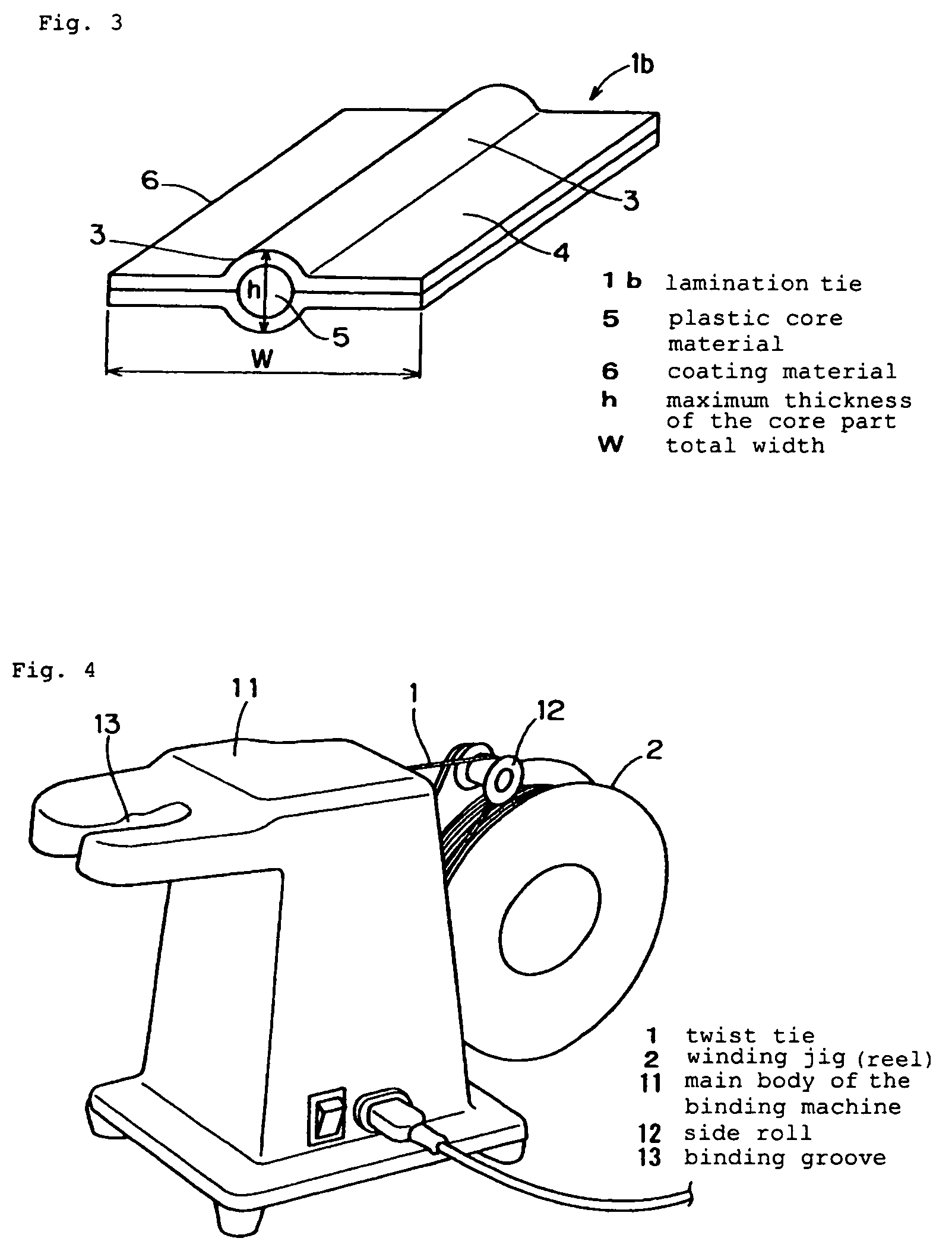Non-metallic twist tie
a twist tie and non-metallic technology, applied in the field of non-metallic twist tie, can solve the problems of inconvenient shape, higher hardness of materials, weak core parts for forming fixed shapes, etc., and achieve the effect of smooth drawing out from the wound shape and easy making
- Summary
- Abstract
- Description
- Claims
- Application Information
AI Technical Summary
Benefits of technology
Problems solved by technology
Method used
Image
Examples
example 1
[0078]Extrusion was carried out using the composition mentioned in the compounding example for the extrusion tie as shown in Table 1 followed by subjecting to an elongation for 3-fold to prepare a twist tie having the shape as shown in FIG. 2. This was wound in about 1,000 m in a form of a bundle to prepare extrusion tie samples A-1 to A-6. Results of measurement for size, shape and property of the samples are as shown in Table 3. Each sample was subjected to a binding machine and subjected to a practical test and the results thereof are as shown in Table 4.
example 2
[0079]For each of the PE core lines (a to e) mentioned in Table 2, plural core lines were laminated using the coating material mentioned in the same Table 2 in such a manner that they were made to reside in the coating material in parallel and, after that, the product was slit in each width to prepare a lamination tie having a shape as shown in FIG. 3. This was then wound in about 1,000 min a form of a bundle to prepare lamination tie samples B-1 to B-5. Results of measurement for size, shape and property of the samples are as shown in Table 3. Each sample was subjected to a binding machine and then to a practical test and the results thereof are as shown in Table 4.
[0080]
TABLE 1Compounding Example of Extrusion TieCompoundedName ofAmount (part(s)ManufacturingCompounded Compositionby weight)CompanyPolyethylene terephthalate (SA-1206)90UnitikaPolyethylene resin (NUC, grade G)10Nippon UnicarZinc stearate0.1Sakai ChemicalIndustryBarium sulfate10Sakai ChemicalIndustrySoftener (Adekapol C...
PUM
 Login to View More
Login to View More Abstract
Description
Claims
Application Information
 Login to View More
Login to View More - R&D
- Intellectual Property
- Life Sciences
- Materials
- Tech Scout
- Unparalleled Data Quality
- Higher Quality Content
- 60% Fewer Hallucinations
Browse by: Latest US Patents, China's latest patents, Technical Efficacy Thesaurus, Application Domain, Technology Topic, Popular Technical Reports.
© 2025 PatSnap. All rights reserved.Legal|Privacy policy|Modern Slavery Act Transparency Statement|Sitemap|About US| Contact US: help@patsnap.com



